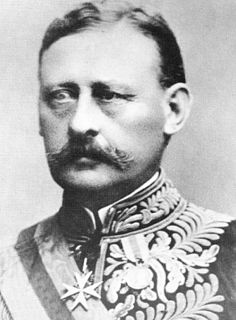
Sir Henry Arthur Blake was a British colonial administrator and Governor of Hong Kong from 1898 to 1903.
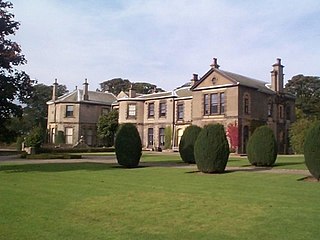
Lotherton Hall is a country house near Aberford, West Yorkshire, England. It lies a short distance from the A1(M) motorway, 200 miles (320 km) equidistant between London and Edinburgh. It is one of nine sites in the Leeds Museums & Galleries group.
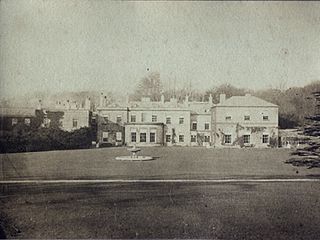
Parlington Hall was the seat of the Gascoigne family, Aberford near Leeds in the county of Yorkshire, in England.

The Gascoigne Baronetcy, of Barnbow and Parlington in the County of York, was a title in the Baronetage of Nova Scotia. It was created on 8 June 1635 for John Gascoigne. He had converted to Roman Catholicism in 1604. His son Sir Thomas, 2nd Baronet, was accused of conspiracy to murder King Charles II as part of the mythical Popish Plot, but acquitted. The eighth Baronet was Member of Parliament for Thirsk, Malton and Arundel. He renounced Catholicism, and was much involved in the Irish Parliament and in horse racing. Sir Thomas died in 1810, the year after his only son died in a hunting accident, upon which the baronetcy became either extinct or dormant.
Caryll Molyneux, 3rd Viscount Molyneux was an Irish peer.
Frederick Mason Trench, 2nd Baron Ashtown DL was an Irish peer and magistrate.
John William Plunkett, 17th Baron of Dunsany was an Anglo-Irish Conservative politician and peer.
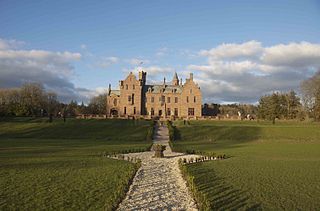
Castle Oliver is a Victorian mock castle in the south part of County Limerick, Ireland. Built for entertaining rather than for defense, it has a ballroom, drawing room, library, morning room, dining room and hall which feature hand-painted ceilings, decorated ornamental corbels, superbly executed stained glass windows and stencil work. The castle stands on massive terraces and has a commanding view over much of its former 20,000-acre (81 km2) estate. The castle has Ireland's largest wine cellar, said to hold approximately 55,000 bottles. From May to September 2014, Castle Oliver was opened to the public in conjunction with "Limerick City of Culture" for house tours.

George Fowler Jones was an architect and early amateur photographer who was born in Scotland but based for most of his working life in York.

Thomas Watson-Wentworth, 1st Marquess of Rockingham, KB, PC (I) of Wentworth Woodhouse, Yorkshire was a British Whig politician who sat in the House of Commons from 1715 until 1728 when he was raised to the Peerage as Baron Malton.
Events from the year 1666 in Ireland.

Thomas Gascoigne was a Yorkshire land and coal-owner.

Sir Thomas Gascoigne, 8th Baronet was born on 7 March 1745 on the Continent into a devout Catholic gentry family based in Yorkshire. Despite receiving a solid Catholic education at institutions in northern France and Italy, Gascoigne would later renounce his religion to become a Foxite Whig Member of Parliament. Prior to his apostasy he travelled extensively as a Grand Tourist throughout much of Spain, France and Italy in the company of the noted travel writer Henry Swinburne, who would later record their journeys in two popular travel guides Travels through Spain in the Years 1775 and 1776 (1779) and Travels in the Two Sicilies, 1777–1780 (1783–5). Together they gained close access to the leading courts of Europe, particularly in Spain and Naples. An honorary member of the Board of Agriculture, Gascoigne was an important advocate of agricultural reform as well as a considerable coal owner who helped pioneer technological developments in the extractive industries. He is emblematic of how movements within the Enlightenment were having a major influence on the attitudes, activities and outlook of many leading English Catholic gentry families in the period.
Sir Thomas Fairfax was an owner of Gilling Castle, near Gilling East, North Riding of Yorkshire, England.
The High Sheriff of Limerick was the British Crown's judicial representative in County Limerick, Ireland from the 16th century until 1922, when the office was abolished in the new Free State and replaced by the office of Limerick County Sheriff. The sheriff had judicial, electoral, ceremonial and administrative functions and executed High Court Writs. In 1908, an Order in Council made the Lord-Lieutenant the Sovereign's prime representative in a county and reduced the High Sheriff's precedence. However the sheriff retained his responsibilities for the preservation of law and order in the county. The usual procedure for appointing the sheriff from 1660 onwards was that three persons were nominated at the beginning of each year from the county and the Lord Lieutenant then appointed his choice as High Sheriff for the remainder of the year. Often the other nominees were appointed as under-sheriffs. Sometimes a sheriff did not fulfil his entire term through death or other event and another sheriff was then appointed for the remainder of the year. The dates given hereunder are the dates of appointment. All addresses are in County Limerick unless stated otherwise.
Merrion Castle was a castle situated in present-day Mount Merrion, to the south of Dublin city centre. Built in the early fourteenth century, it was from the sixteenth to the early eighteenth century the principal seat of the Fitzwilliam family, who later acquired the title Viscount Fitzwilliam. After the Fitzwiliams moved to Mount Merrion House in about 1710 the castle fell into ruin, and it was demolished in 1780. No trace of it survives today. It was located opposite Merrion Gates, on the site of St. Mary's Home and School for the Blind. Its location, and the modern site of St.Mary's, can be seen on historical maps.
Richard Philip Oliver, later known as Richard Oliver Gascoigne, was an Irish landowner at Castle Oliver in County Limerick and Parlington Hall in Yorkshire.
Colonel Frederic Richard Thomas Trench Gascoigne DSO was a British soldier and landowner.
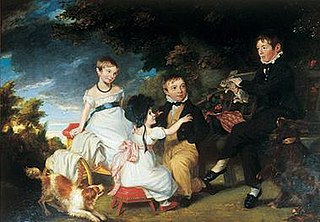
Elizabeth Gascoigne was the heiress to the Gascoigne estate, eventually becoming the main owner of Lotherton Hall in Leeds which is now owned by Leeds City Council as part of the Leeds Museums and Galleries. She was a woman of many talents, dabbling in writing books, designing stained glass windows, playing the harp and being a charitable contributor to the community of Leeds, mainly Aberford in Yorkshire and Ashtown in Ireland. Her works in stained glass have been displayed in exhibitions, and many of the buildings her and her sister commissioned are still part of the communities that they lived in.
Laura Gwendolen Douglas Galton Gascoigne was born on the 2nd of March 1859 and died on the 2nd of July 1949 aged 90.She was a woman of many talents, being a nurse, novelist, gardener and singer in her time She was appointed Commander Order of the British Empire in 1918 (C.B.E). She was appointed Dame of Justice, most Venerable Order of the Hospital of St. Johns of Jerusalem







